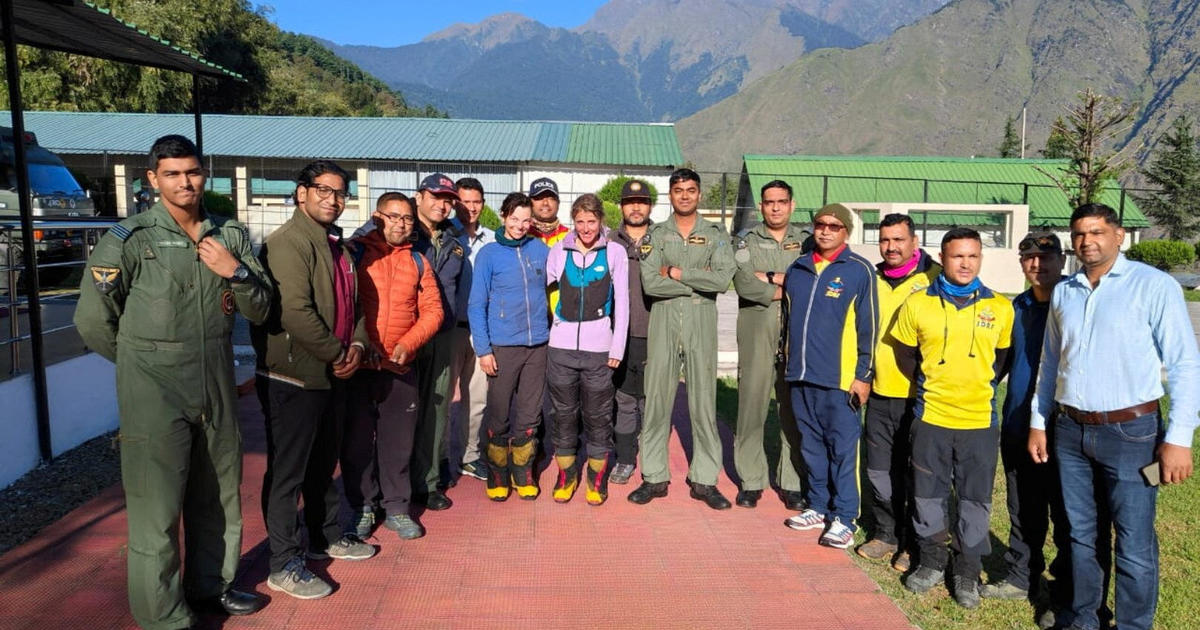The unforgiving beauty of the Himalayas claimed two climbers, Michelle Dvorak and Fay Manners, when their supplies plummeted down a ravine during their ascent of Chaukhamba mountain in India. Stranded at over 20,000 feet, their ordeal highlights the extreme challenges and inherent risks associated with high-altitude mountaineering. The pair’s two-day struggle for survival, marked by dwindling supplies, treacherous weather conditions, and the constant threat of hypothermia, serves as a stark reminder of the importance of meticulous planning, preparedness, and the critical role of emergency response in such perilous environments. This account details their harrowing experience, the efforts undertaken for their rescue, and the critical lessons learned from this near-tragic event.
The Descent into Peril
Losing Supplies, Losing Hope
Michelle Dvorak and Fay Manners’s climbing expedition took a perilous turn when their essential equipment and food supplies slid down a ravine, leaving them completely unprepared for the harsh conditions at their altitude. This unforeseen incident left them vulnerable to the elements with no tent for shelter, no stove to melt snow for water, and inadequate warm clothing to combat the plummeting temperatures. The immediate loss of their supplies triggered a cascade of difficulties, quickly escalating their situation from challenging to life-threatening. The psychological impact of this sudden loss, transforming a challenging climb into a desperate fight for survival, shouldn’t be understated.
Facing the Elements
The severity of their predicament was further compounded by the onset of snow. Seeking minimal protection, they huddled on a precarious ledge, battling the elements. The lack of food and warmth led to the onset of hypothermia, leaving Manners constantly shivering and weak. This situation perfectly exemplifies the brutal realities of high-altitude climbing: a single unforeseen event can rapidly change a seemingly manageable climb into a fight for survival against the unrelenting power of nature. The unrelenting cold, the ever-present threat of falling, and the agonizing wait for rescue intensified the psychological toll of the experience. This highlights the profound vulnerability climbers face when confronted with unforeseen setbacks at extreme altitudes.
The Struggle for Rescue
Initial Attempts and Delays
Despite sending an emergency message, initial rescue attempts were thwarted by poor weather conditions: a combination of fog, snow, and high altitude made locating the climbers extremely difficult. The challenges faced by the rescue teams underscores the logistical complexities and safety risks inherent in high-altitude rescues. Helicopters, hampered by the unforgiving weather, were initially unable to locate the stranded climbers, adding to their despair. This highlights the need for comprehensive rescue systems and robust communication networks for high-altitude climbing operations.
A Stroke of Luck and French Aid
Their luck finally turned when they initiated a cautious abseil down the mountain, eventually encountering a team of French climbers. This chance meeting proved invaluable, as the French climbers shared their food and equipment, and also critically provided the precision location to allow the helicopters to locate them finally. The act of sharing resources in this perilous environment embodies the spirit of cooperation and mutual assistance within the mountaineering community, often facing the extreme challenge together.
The Rescue and Aftermath
The Helicopter Lift and Safe Return
After battling two days of adverse weather conditions, the Indian Air Force helicopter finally reached the climbers at an altitude of 17,400 feet, successfully airlifting them to safety. This successful rescue serves as a testament to the skill and determination of the rescue team and the perseverance of the two climbers who defied the overwhelming odds to survive this ordeal. The success was further emphasized by the collaboration between the rescue operation and climbers who happened to be nearby, highlighting the role of effective cooperation in emergencies of such high risk.
Lessons Learned
The experience of Dvorak and Manners brings to the forefront numerous vital lessons for mountaineers and underscores the significance of proper preparation and precaution when facing extreme environments. The reliance on readily available communication and the use of emergency signals cannot be overstated. Adequate planning and careful consideration of contingencies should be considered mandatory in high-altitude climbing. Beyond this, the event serves as a reminder of the inherent dangers of high-altitude climbing and the importance of acknowledging those risks, including the potential for emergency situations and preparedness for unexpected problems.
Takeaway Points
- Thorough preparation is crucial: The incident highlights the absolute necessity of comprehensive planning for high-altitude climbs, including contingencies for equipment failure and adverse weather conditions.
- Effective communication systems are vital: The difficulty of locating the climbers emphasizes the crucial need for reliable communication systems in remote and challenging environments.
- Mutual aid among climbers is invaluable: The assistance provided by the French climbers showcases the importance of teamwork and community support within the mountaineering community.
- Weather conditions are a major factor: The impact of weather significantly delayed the rescue process. Accurate forecasting and preparedness for changing weather are vital for high-altitude climbs.
- Resilience and adaptability are essential: Dvorak and Manners’ ability to make resourceful choices amidst their predicament showcase both physical and mental fortitude which proves essential in perilous situations.









